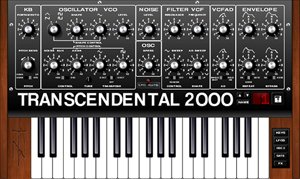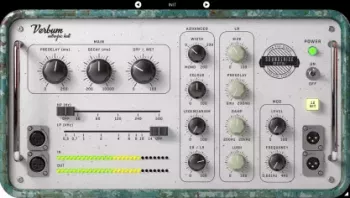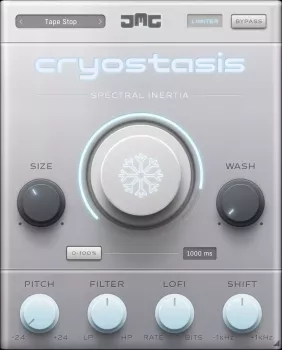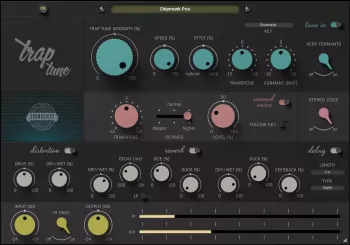TN Audio Transcendental 2000 vsti/standalone | 4.19 MB
英文简介:
From left to right the switches are:-
Norm / NPD These stand for normal triggering where if a key is pressed and held any more notes played will not retrigger the envelopes (basically legato mode) and new pitch detect where every key strike triggers the envelopes.
KBD / OSC This is the gate signal sent to the amplifier controlled by either the keyboard or osc (LFO).
Transpose Changes the pitch of the keyboard down 2 octanes, off and up 2 octaves.
KB / Random / Off This is the filter tracking which can either be set to track the keyboard, be varied by the sample and hold or switched off.
BP / LP This is for selecting filter type bandpass or lowpass.
Single shot / Hold on Selects if the AD envelope should go straight from attack to decay or should stay at the peak of the attack until the key is released before decaying.
On / Norm / Gate This controls how the ADSR is triggered by the osc (LFO) either constantly, off or constantly while a key is pressed.
On / ADSR This controls if the signal should bypass or go through the ADSR before the output.
Page Buttons
The KEYS button shows the keyboard as pictured above.
The LFOS button brings up the osc (LFO) speed control page.
The frustrating thing about the original Transcendent was that there was only one LFO with seven destinations, so no slowly sweeping the filter over a bar while triggering the envelope with sixteenth notes for example. Here I've tried to remedy that by giving control of the speed for all seven destinations.
The speed of the LFO is set with the osc control on the front panel and can be set between 0.06 to 20 Hz same as the original or by switching on the tempo sync can be set to note lengths of a thirty second to two bars either straight, dotted or triplet. Each destination can then be set to between sixteen times slower or faster than the speed set with the main control, these can also be switched to locked divisions of the speed in step mode. Triggering of the LFO can be switched between free running (off), legato and triggered by every key strike (on).
The OSC 2 button brings up the second oscillator page.
The second oscillator is a supersaw with controls for level, detune (saw spread) and plus or minus one octave in semitone steps detune. There is a switch to control how it reacts to pitch modulation either on, its pitch is effected by the pitch modulation section, off, the pitch modulation section has no effect or sync where there is still no modulation but the main oscillator is synced to it.
The rest of the OSC 2 page is taken up by its dual vowel filter with controls for vowel mix, two for selecting the vowels, a control for the balance between the vowels or when switched to mod controls the amount of modulation between them, a switch for modulation shape, a control for modulation speed which like the LFO's can be tempo synced and finally a LED display showing the current position of the balance.
The GATE button brings up the gater page.
Controls from the left are Off / On switch, a switch to select if the gater effects the VCA, VCF or both and a switch to select if the gater syncs to the host tempo or is user defined by the knob to its right. This will also effect any other parts that are tempo synced.
Next is the control for direction forward, bidirectional or random then comes the gate time (speed) selector to select between 1/2, 1/4, 1/8, 1/16 and 1/32 step lengths followed by the swing amount, the controls for the attack and release of the steps and finally the mix for controlling the balance between the original and gated signal. Underneath are a row of buttons for selecting which of the steps are on or off.
The FX button brings up the dual delay page.
Twin delays with tempo sync and the option to have them in parallel or serial.
官网: http://www.urbanite.karoo.net/tnaudio.htm







评论0